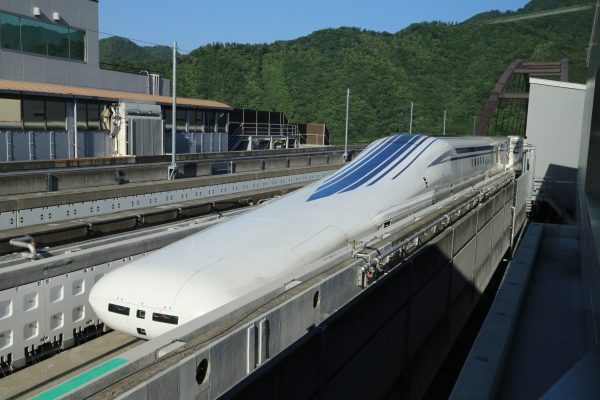By Zachary Berzolla, Ph.D., and Jennifer Bewley, Ph.D.
Incorporating downscaled global models of future climate change-induced weather trends and other projection technologies into energy performance contracts can aid in properly designing systems to meet rapidly evolving needs.
Ensuring the nation’s military installations are resilient to the climate threats of tomorrow is critical to projecting power and promoting the nation’s interests abroad—both core responsibilities of the Department of Defense (DOD).
As projects to promote climate resilience are undertaken across the defense enterprise, we must ensure that this work accurately meets the future needs of each installation. By leveraging the best available science on climate change hazards in the form of downscaled climate data for energy simulations, DOD can better evaluate the impact of projects, identify best methods to meet resiliency goals, and carry out better-performing energy savings performance contracts (ESPCs) and utility energy service contracts (UESCs).
Designing for the Future
Both ESPCs and UESCs often use building energy models (BEMs) to evaluate the energy and cost savings potential of proposed retrofit projects. BEMs apply physics-based heat and mass flow equations to computer models of buildings, simulating yearly energy consumption and properly sized heating and cooling equipment. However, these models are only as accurate as their inputs. Energy audits are commonly used to properly characterize current building condition and accurately predict energy savings.
Once the physical state is characterized, site-specific factors come into play. For instance, the difference in the simulated energy consumption and size of the air conditioning system between identical office buildings in Boston and Houston stems from the weather file used for simulation. BEMs usually rely on weather data in the form of typical meteorological year data, which draws on a minimum of 12 years of historical inputs to create a weather file that best represents the average weather during that period on a month-by-month basis.

While BEMs simulated with a typical meteorological year historically have been sufficient to design buildings and size their heating and cooling systems, this is no longer the case in the face of a rapidly warming world. Most buildings on military installations are expected to be in use for 50 years or more. They will face substantial climate change during their lifetimes. If climate change is not accounted for as projects are developed, at best, they risk underperforming financially; at worst, they risk failure of critical mission operations due to poorly designed building systems.
Leveraging New Models
Climate change impacts vary greatly by installation. Some face extreme heat or cold. Others endure stronger hurricanes, extreme droughts, wildfires, or earthquakes. Understanding the impacts of climate change at a local level is key to devising adaptation strategies.
Global climate models have been in continuous development for decades at research institutions worldwide and provide physics-based analysis of the changing climate. Most of these models are now simulated using grids that cover the planet in 100-km by 100-km areas. To provide more detailed climate impact assessments at an installation scale, the climate modeling community has developed several methods to downscale global results to as low as a 1-km by 1-km resolution, each with its own positives and negatives.
A key advancement in climate modeling is the use of ensemble modeling. Ensemble models combine the outputs of multiple global climate models together to create climate projections that naturally de-emphasize outliers and focus on most-likely outcomes.
To provide more detailed climate impact assessments at an installation scale, the climate modeling community has developed several methods to downscale global results to as low as a 1-km by 1-km resolution, each with its own positives and negatives.
Each global simulation starts with variables that define projected man-made emissions levels based on emissions pathways, developed by the Intergovernmental Panel on Climate Change (IPCC). These pathways range from “business as usual” to aggressive technological advancements and policy changes. Models that are run with multiple emissions pathways provide the IPCC with a range of possible climate change futures.
BEM practitioners across academia and the commercial sector have begun to incorporate climate change into their work. Several tools are available today and, while widely used by those trying to integrate climate change into BEM models, they do not leverage the best available science. BEM practitioners currently rely on a technique called morphing, which is built on the assumption that the climate is stationary. This assumption may not apply due to future climate change. An alternative approach is needed. Physics-based global climate models capture the changing climate by simulating dynamic changes and therefore do not assume the climate is stationary.
No single publicly available tool provides building energy modelers with local climate change data using state-of-the-art best practices such as ensemble modeling with the latest IPCC scenarios. As a result, ESPCs presently being evaluated using BEMs are at risk of not accurately representing future climate change, and, consequently, under-sizing systems or specifying design choices that are not built to withstand the future.
Science Informed Path
According to several studies, climate change is expected to increase total energy use in buildings from 24 percent up to 50 percent by 2050 due to a substantial increase in cooling requirements with a lesser drop in heating. This surge would be even greater in the second half of the century. Already DOD spends approximately $4 billion annually on energy for fixed installations.
Heat is the single biggest enemy for the critical electronics that support defense operations. If buildings and their cooling systems are not designed to handle this increased need, the risk of failure increases. Also, the extra costs needed to meet the increased demand for cooling may pull crucial financial resources from other efforts.
Meeting energy security and resilience goals across DOD’s asset base will be a far-reaching, multi-billion undertaking. The department will only achieve full potential in this effort if state-of-the-art climate change projections are combined with the proven ability of ESPCs/UESCs to fund innovative upgrades to facilities.
Key Tools for Resiliency
ESPCs and UESCs are key tools in the toolkit for meeting resiliency goals. These contracting mechanisms have seen growing adoption across DOD, saving installations money and promoting energy efficiency, energy security, and energy resilience. They also have succeeded in accelerating the normal military construction process and engaged private financing where it did not exist before.
More than $3.2 billion in ESPCs/UESCs have already been awarded to companies to carry out energy efficiency projects, microgrids, and renewable energy installations, with another $1 billion currently in development. These projects can enable the 560,000 buildings on U.S. military installations and their occupants to continue their mission-critical tasks independent of engineering casualties to the commercial power grid, whether caused by extreme weather, cyberattacks, or other threats.
Zachary Berzolla is a Recent Graduate of the Building Technology Program, Massachusetts Institute of Technology; zbz@mit.edu
Jennifer Bewley, Ph.D., is Research Staff Member, Institute for Defense Analyses; jbewley@ida.org
For more information, see “Building Energy Modeling and Resilient Department of Defense Installations: Accounting for Climate Change” published by IDA, at https://idalink.org/D-33432-LP.
More News from TME
-

Developing a Maglev Network for National Defense
A transportation network leveraging superconducting magnetic levitation technologies would bring benefits for logistics, surface transportation, and energy storage, as well as strengthen national defense priorities and the defense industrial base. -

Meeting Training Needs with a One-of-a-Kind Diving Facility
In the planning process of a new Expeditionary Maritime Operations Center at Joint Expeditionary Base Little Creek-Fort Story, close collaboration and careful design was necessary to provide a path forward for a substantially deep training pool and meet the needs of advanced diving teams and other maritime operators. -

Delivering Successful Projects for USACE Far East District
Establishing a physical presence in Korea and collaborating with local contractors can assist U.S.-based firms in successfully delivering federal projects on the peninsula.